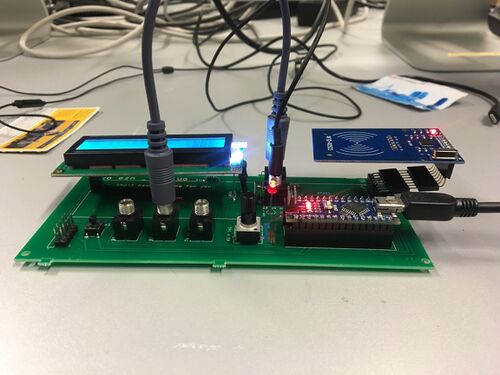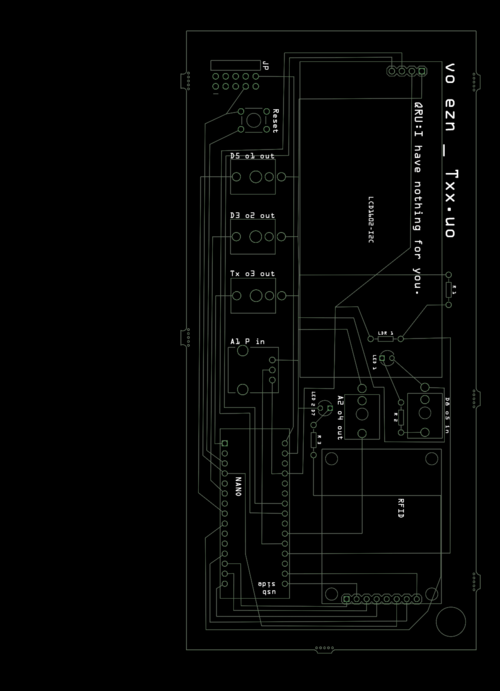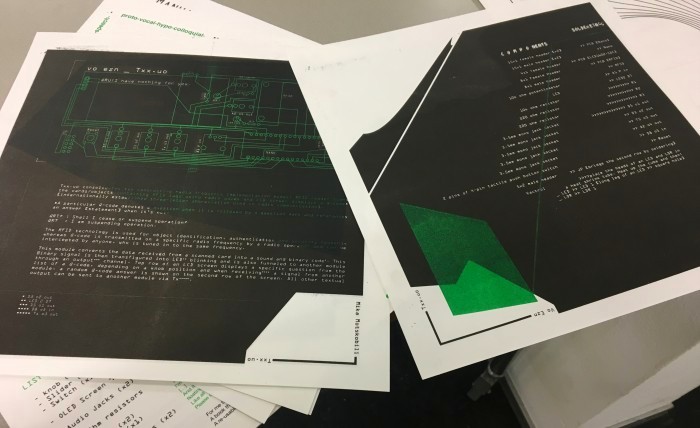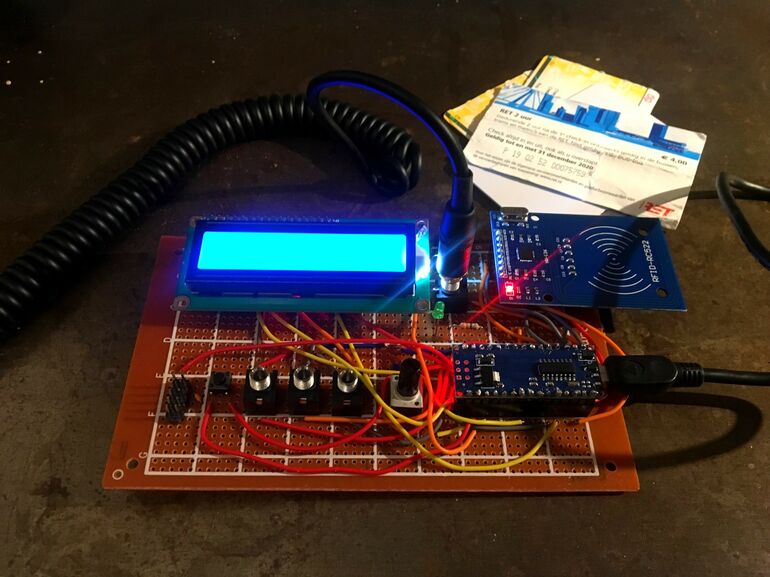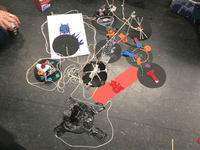User:E.zn/special issue X: Difference between revisions
(→Txx.uo) |
No edit summary |
||
| Line 54: | Line 54: | ||
<!-- ⯐ 🢗 --> | <!-- ⯐ 🢗 --> | ||
---- | ---- | ||
===<span style="color:white">Perfboard prototype</span>=== | |||
<br> | |||
[[File:Manual.jpg|770px]] | |||
<br><br> | |||
---- | |||
===<span style="color:white">Perfboard prototype</span>=== | ===<span style="color:white">Perfboard prototype</span>=== | ||
<br> | <br> | ||
Revision as of 02:17, 12 December 2019
Txx.uo
Txx.uo consolidates two contrasting radio frequency implementation modes: RFID reader scans the cards/objects containing RFID tags using radio waves and LCD screen displays a Q-code* [internationally established three-letter abbreviation used in radio communication].
*A particular Q-code denotes a question when it is followed by a question mark and references an answer [statement] when it's not:
QRT? : Shall I cease or suspend operation?
QRT : I am suspending operation.
The RFID technology is used for object identification, authentication and security reasons, whereas Q-code is transmitted on a specific radio frequency by a radio operator and can be intercepted by anyone, who is tuned in to the same frequency.
This module converts the data received from a scanned card into a sound and binary code•. This Binary signal is then transfigured into LED•• blinking and is also funneled to another module through an output••• channel. Top row of an LCD screen displays a specific question from the list of a Q-code, depending on a knob position and when receiving•••• a signal from another module, a random Q-code answer is shown on the second row of the screen. All other textual output can be sent to another module via Tx•••••.
• D3 o2 out
•• LED 2 D7
••• D5 o1 out
•••• D8 o5 in
••••• Tx o3 out
Components and configuration
+ : Solder
> : Plug into
+ 15x1 female header [x2] 🢒🢒 PCB [Nano]
+ 15x1 male header [x2] 🢒🢒 Nano
+ 4x1 female header 🢒🢒 PCB [LCD1602-I2C]
+ 1602 I2C LCD display 🢒🢒 LCD1602-I2C
+ 8x1 Female Header 🢒🢒 PCB [RFID]
+ 8x1 male header 🢒🢒 RFID
+ 10k ohm potentiometer 🢒🢒 A1 P in
+ LED 🢒🢒 LED2 D7
+ 10k ohm resistor 🢒🢒 R1
+ 220 ohm resistor 🢒🢒 R3
+ 220 ohm resistor 🢒🢒 R3
+ 3.5mm mono jack socket 🢒🢒 D5 o1 out
+ 3.5mm mono jack socket 🢒🢒 D3 o2 out
+ 3.5mm mono jack socket 🢒🢒 T5 o3 out
+ 3.5mm mono jack socket 🢒🢒 A2 o4 out
+ 3.5mm mono jack socket 🢒🢒 D8 o5 in
+ 2 pins of 4-pin tactile push button switch 🢒🢒 Reset
+ 5x2 male header 🢒🢒 JP [bridge the second row by soldering them together]
+ Vactrol : place the heads of LED and LDR in a heat shrink tube. Heat up the tube and then:
_ + LED 🢒🢒 LED 1 [long leg of LED 🢒🢒 square hole]
_ + LDR 🢒🢒 LDR
> RFID 8x1 male header 🢒🢒 8x1 11mm female header [bend the pins] 🢒🢒 8x1 11mm female header 🢒🢒 8x1 11mm female header [bend the pins] 🢒🢒 8x1 female header.
> LCD 🢒🢒 4x1 female header
> NANO 🢒🢒 2 15x1 female headers
Perfboard prototype
Perfboard prototype
Collaboration, Conflict & Consent
A two-day workshop with Eleanor Greenhalgh
_ Applying various methods of decision-making and evaluating the outcomes.
_ Practicing listening in teams of three [each having a specific role].
_ Playing group games, like counting to 20.
_ Creating a consensual artwork.
Module
Building a module with a guest tutor Dennis de Bel
__ Voltage, Current, Resistance, and Ohm's Law
Referneces [Dennis]
The worst volume control UI in the world
Dark Patterns: User Interfaces Designed to Trick People

